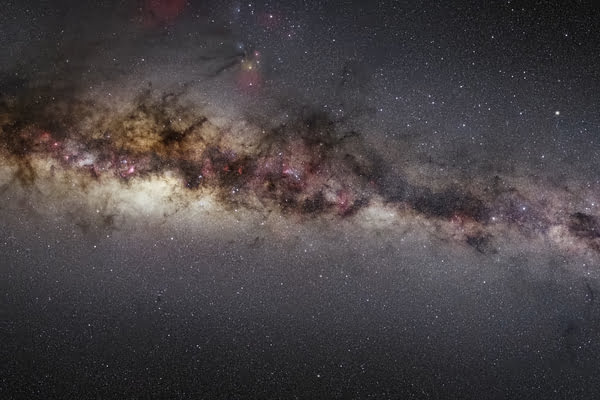
The question of what existed before the Big Bang is still a mystery, and scientists and cosmologists are still trying to understand the origins of the universe.
According to the prevailing scientific theory of the Big Bang, the universe began as a singularity – a point of infinite density and temperature – around 13.8 billion years ago. However, the question of what existed before the Big Bang is still an area of active research and debate, with no conclusive evidence or theory yet.
Some theories suggest that the universe may have gone through cycles of expansion and contraction, with each cycle beginning with a new Big Bang and ending with a “Big Crunch.” In this theory, the universe may have existed in a different form before the Big Bang, or it may have emerged from another universe.
Another theory is that the universe may have emerged from a quantum fluctuation in a higher-dimensional space. According to this theory, the universe may have “bubbled up” from a pre-existing state of quantum fluctuations, and the Big Bang was the point at which the universe became large enough to be described by classical physics.
Overall, the question of what existed before the Big Bang is still a mystery and an active area of research and speculation, with no definitive answers yet.
Big Crunch theory
The Big Crunch theory is a cosmological model that suggests that the universe will eventually collapse back on itself in a massive, cataclysmic event. This theory is based on the idea that the universe is not expanding forever, but rather that its expansion will eventually slow down and reverse due to the pull of gravity.
According to the Big Crunch theory, the universe will eventually stop expanding and start to contract. As the universe contracts, it will become smaller and dense, eventually becoming a singularity – a point of infinite density and temperature, much like the beginning of the universe in the Big Bang theory.
As the universe collapses, all matter and energy in the universe will be compressed into a single point, and time and space will cease to exist. The Big Crunch is thought to be the ultimate fate of the universe, and it would mark the end of the current cycle of the universe.
However, the Big Crunch theory is not currently favored by many scientists and cosmologists, as it conflicts with observations of the universe’s current rate of expansion, which appears to be accelerating rather than slowing down. Instead, the prevailing theory is that the universe will continue to expand indefinitely, and eventually, all matter will be so spread out that the universe will become cold, dark, and lifeless, a state known as the “heat death” of the universe.
While the Big Crunch theory is a fascinating and intriguing model of the universe’s fate, it is not currently supported by observational evidence and is considered unlikely by many scientists and cosmologists.
What was Buddha’s explanation of the Big Bang?
It’s important to note that Buddha lived long before the concept of the Big Bang was proposed by modern cosmology. Therefore, he did not have a specific explanation for what existed before the Big Bang.
In Buddhism, there is the concept of dependent origination, which explains that everything arises in dependence upon causes and conditions. This means that the universe as we know it today, including the Big Bang and all that came after it, is the result of an intricate network of causes and conditions that stretch back infinitely.
According to Buddhist cosmology, the universe goes through cycles of creation and destruction, known as kalpas. Each kalpa begins with a period of expansion, during which the universe gradually takes shape, and ends with a period of contraction, during which everything in the universe is destroyed.
While the exact nature of the universe before the current kalpa is not explicitly discussed in Buddhist cosmology, it is generally accepted that there have been an infinite number of kalpas in the past, each with its own unique set of causes and conditions that led to its creation.
What is a Kalpa in Buddhism?
A Kalpa is a period of time that is used to measure the lifespan of a universe. According to Buddhist cosmology, the universe goes through cycles of creation and destruction, and each cycle lasts for a Kalpa. The duration of a Kalpa is difficult to measure, but it is said to be extremely long – millions or even billions of years.
Buddha’s Explanation of Kalpa:
In Buddhism, Kalpa is seen as a way to understand the impermanence and transience of all things. Everything in the universe, including the universe itself, is subject to the law of impermanence, which means that everything is in a constant state of change.
Buddha taught that all things arise from causes and conditions and that nothing exists independently. This means that the universe, and everything in it, arises in dependence upon a complex web of causes and conditions that stretch back infinitely.
In Buddhist cosmology, each Kalpa is divided into four stages: the formation stage, the existence stage, the destruction stage, and the emptiness stage. During the formation stage, the universe gradually takes shape, and during the existence stage, it is in a stable state. During the destruction stage, everything in the universe is destroyed, and during the emptiness stage, there is a state of void or nothingness.
Buddhists believe that the universe has gone through countless Kalpas in the past and will continue to do so in the future. Each Kalpa is unique, and the causes and conditions that lead to its creation are different from those that lead to the creation of other Kalpas.

